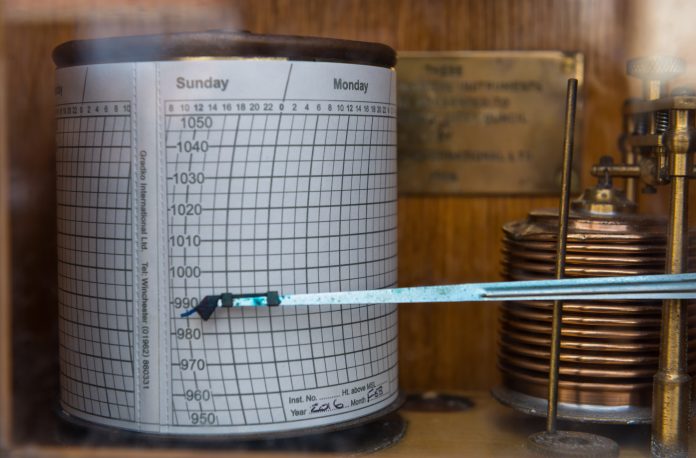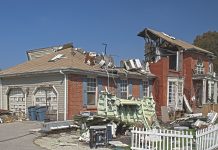In the latest interview with Open Access Government, the National Center of Meteorology tell us more about their priority areas, such as the importance of earthquake monitoring
“The Center objects to merge the source of meteorological and seismic information, monitoring the changes that occur in the atmosphere, providing meteorological and seismological services to all sectors in accordance with applicable laws and regulations in the country. In addition, we exchange relevant data and information on a regional and international level, to keep up with the pace of scientific progress and the implementation of studies and research in the field.
The Seismology Department of the National Center of Meteorology (NCM) monitors earthquake activities in the United Arab Emirates, neighbouring countries and on a global level for strong earthquakes. It presents services of seismic monitoring to all sectors, keeping pace with scientific and technological development in seismic monitoring and analysis. It is important to be at the cutting edge, raising awareness of various activities of the center by all available means. The department also issues reports on a daily, monthly and annual basis for the seismic activities in the state and neighbouring countries that send this data to relevant government agencies concerned with disaster risk management in the country. The publications are distributed through various media outlets, to enable the people and the concerned authorities to take the suitable decisions to protect lives and properties.”
With global climate change, why is it more important than ever to monitor changes occurring in the atmosphere, and why has the need risen to conduct cutting-edge research to learn more for meteorology and earthquakes?
“The climate section at NCM is considered as the prime reference in the country for climate data. NCM has succeeded in collecting climatic data and examining various forms of climate data (surface – upper air – marine) round-the-clock where data is stored in a unified climate database. Increasing the number of automatic stations throughout the country has also helped with the abundance of climate data and given an overall picture of climate patterns in the country. The center issues climate reports on a daily, monthly and annual basis of the network stations along with the preparation of mean climatological data.
The Climate Department offers services that contribute to growth and infrastructure development in the country by providing climate data to governmental and private institutions for the purpose of projects’ studying to take the necessary measures and procedures to cope with emergency situations, thus consequently reducing material and human resources losses.
The impacts caused by climate change on different sectors of society are correlated. Water scarcity and aridity can harm food production and human health because of rising temperatures and frequent dust storms. Human health issues can increase mortality, impact food availability, and limit worker productivity. Climate change can also cause flooding that can lead to disease spread and destruction to infrastructure and ecosystems. However, the impacts of climate change are different across the world, and countries who often have the highest exposure to hazards and the fewest resources to respond are most vulnerable.
Your recent inauguration of the scientific dome is a hugely important addition to NCM, especially as it was completed under such challenging conditions during COVID-19. Can you please explain the importance of the first of its kind ‘Science Dome’?
NCM inaugurated the Science Dome on the 12th of July 2021, a new 4D dome experience to the public as part of an engagement strategy that helps audiences understand meteorology, geophysics and rain enhancement science.
This scientific dome is considered a hugely important addition to NCM, especially that it has been completed under such challenging conditions caused by COVID-19, as it will contribute to consolidating NCM’s active role in meteorology, geophysics and enhance its awareness and educational efforts in this vital scientific field.
The Science Dome features state-of-the-art technologies, special effects, a 6K projection system and custom media. The dome is dedicated to meteorological data and has been designed to host international weather experts and to aid informal education of this process as a 4D immersive experience.
What is the National Air Quality Platform, and why is monitoring air quality a priority for the National Center of Meteorology?
The National Air Quality Platform falls within the framework of the initiative to establish a nationwide air quality network, which is an important step enabling researchers and academics to study the impact of factors on air quality such as:
- The desert environment.
- Industrial progress.
- Population density.
Through mapping the levels of air pollution using information received from 31 monitoring stations across the UAE, the platform contributes to protecting public health as well as our environment.
By establishing the National Air Quality Platform, we aim to enhance cooperation between relevant entities in monitoring air quality and coordinating their efforts through a central platform that links all air quality monitoring stations in the country.
The National Air Quality Platform features the AQI, developed according to the standards of the United States Environmental Protection Agency (EPA), which is a simplified representation of data collected from each air quality monitoring station in the UAE.
The AQI is based on measuring the levels of five major pollutants – nitrogen dioxide (NO2), carbon monoxide (CO), ground-level ozone (O3), particulate matter with a diameter of 10 microns or less (PM10), and sulfur dioxide (SO2). The index uses a scale of zero to 500, with 500 representing the highest level of air pollution. The lower the number, the cleaner the air.
Users can check air quality according to area and learn about the health risks associated with each air pollution level, categorised by colours:
Green: Indicates that air quality is suitable for exercise and other outdoor activities for all individuals.
Yellow: Air quality is acceptable to most individuals, however, prolonged exposure may be uncomfortable for people with respiratory diseases or those performing strenuous outdoor activities, such as sports or physical labour.
Orange: Members of sensitive groups may experience minor negative health effects.
Red: Air quality may affect healthy individuals, with increased impact on members of sensitive groups.
Purple: The entire population is likely to be affected, with the recommendation to avoid outdoor activities.
Burgundy: A serious threat to the health of the entire population, with the recommendation to stay indoors.
The National Center of Meteorology
Tel: +971 2 222 7777
Editor's Recommended Articles
-
Must Read >> An introduction to earthquakes in the U.S.

















